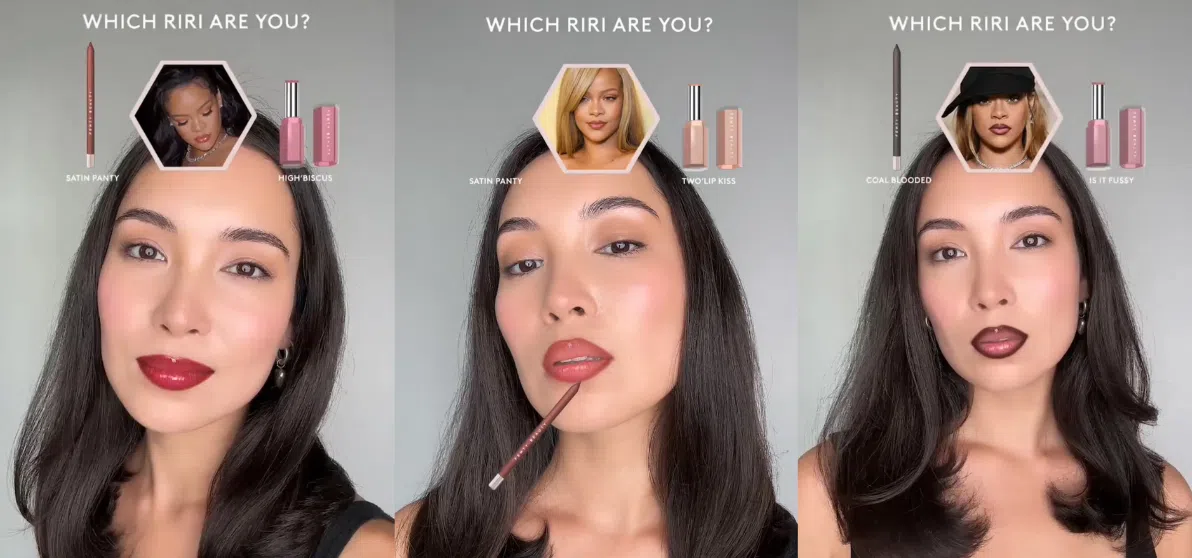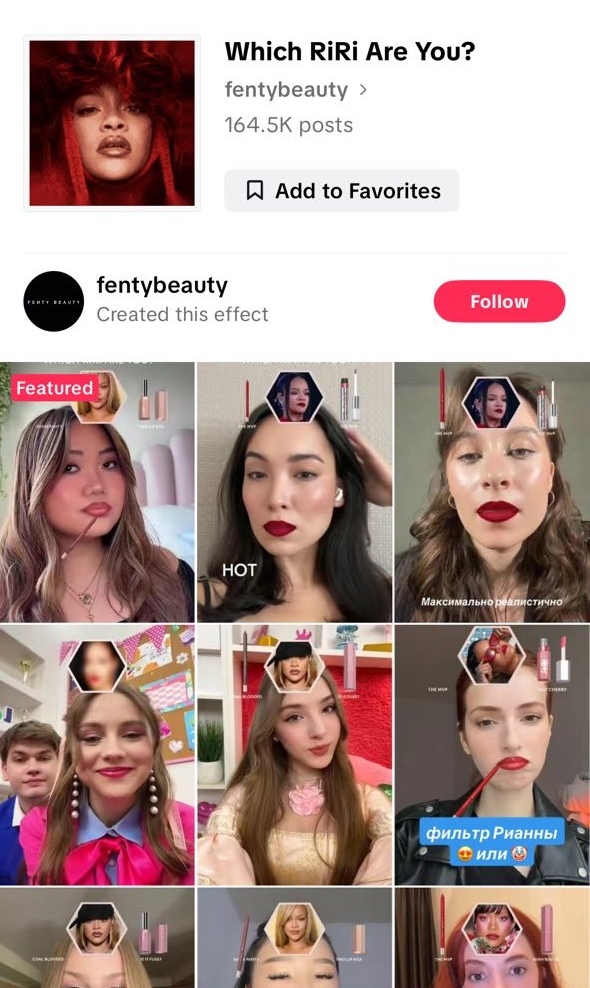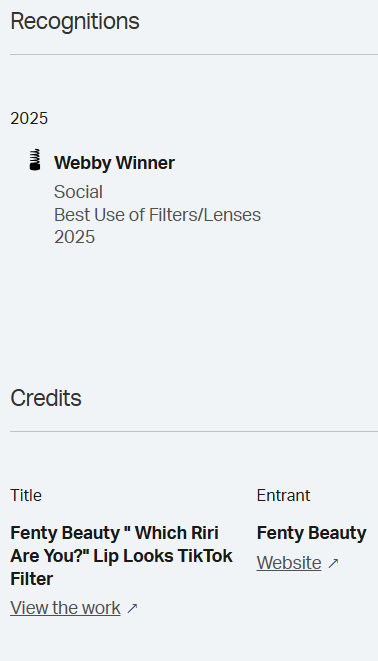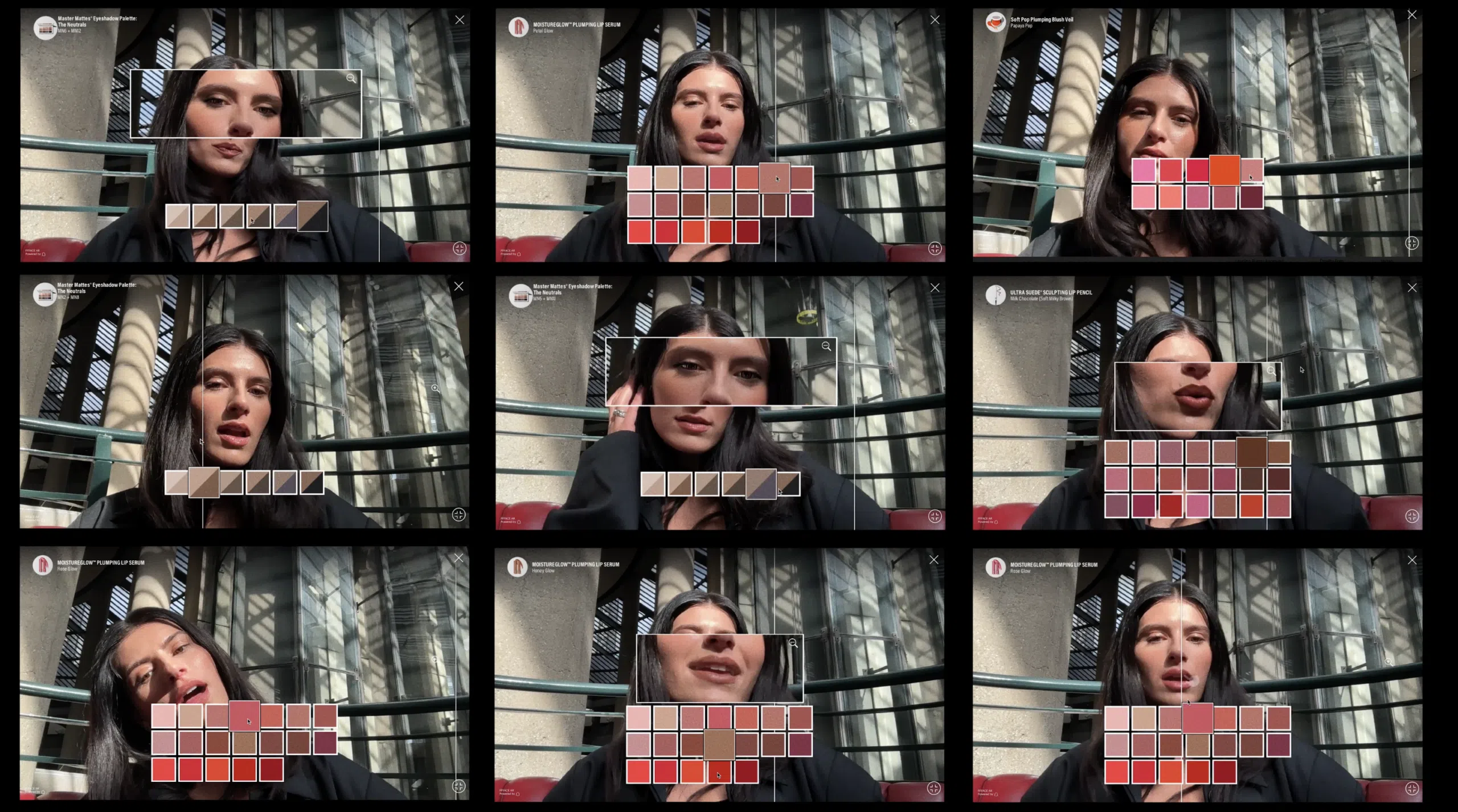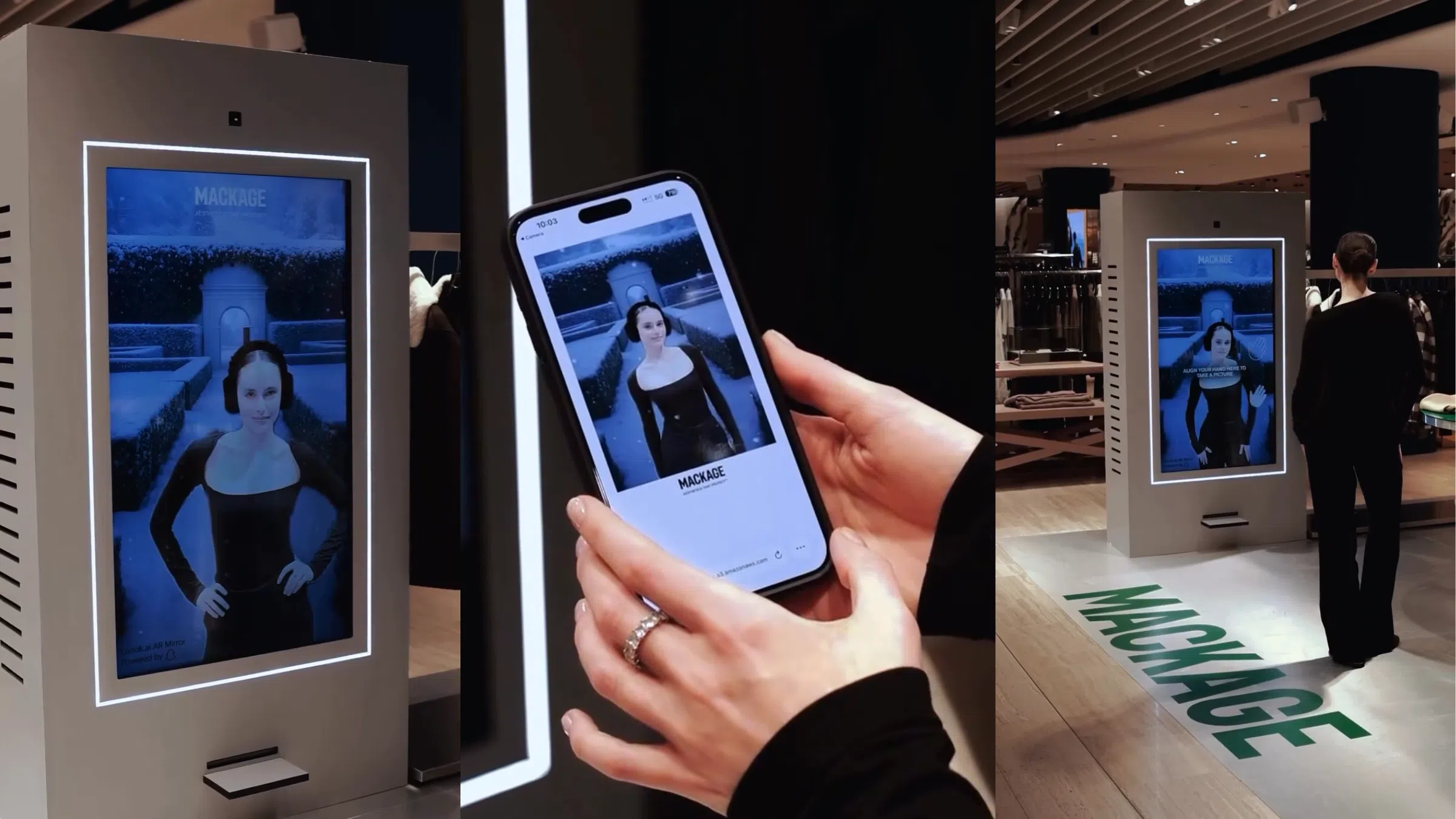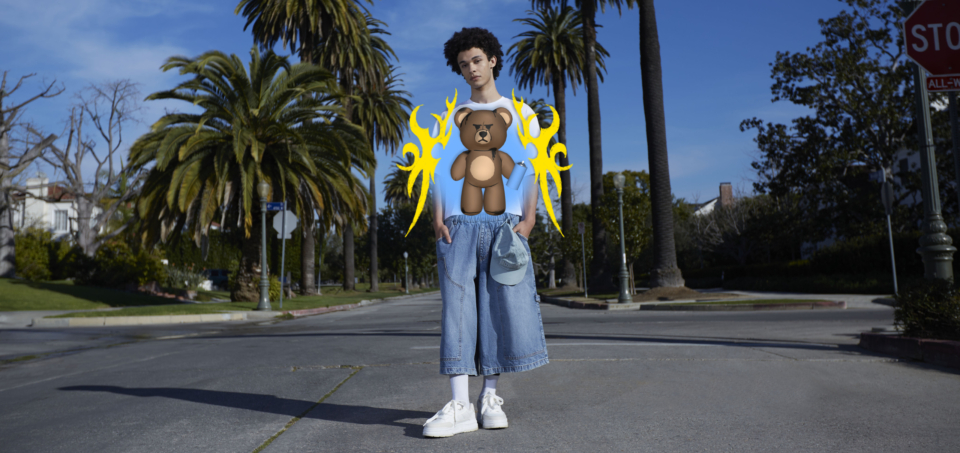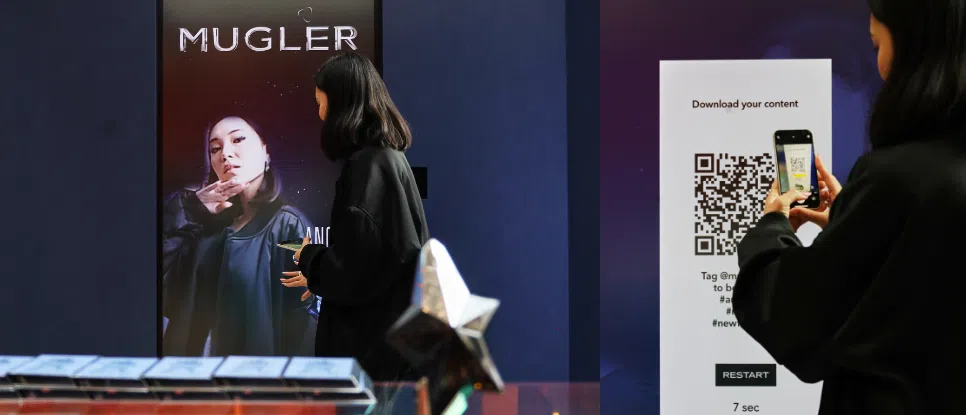AR Filters in Modern Marketing: The Evolution and Strategic Impact

TL;DR — AR Filters in 2026
AR filters have evolved from simple fun effects into an important marketing tool. They now use advanced tracking and AI, allowing brands to create interactive experiences that are more engaging and useful for customers. Platforms like TikTok and Snapchat play different strategic roles: TikTok gives massive reach and viral potential, while Snapchat offers strong AR features in certain markets.
Successful brands use AR filters with clear goals in mind, such as increasing awareness, enabling virtual try-ons, or encouraging user-generated content. Real case studies show that AR filters can deliver large numbers of impressions and significant engagement.
The article also highlights that now is a good moment for brands to invest in AR, as mobile AR remains widely accessible and wearables are still growing. It suggests treating AR as a long-term strategic tool rather than a one-off trend.
Overall, AR filters help brands create more memorable digital experiences and can be integrated into broader marketing strategies across online and offline touchpoints.
From Gimmick to Game-Changer: The AR Filter Story
Over 350 million Snapchat users engage with AR lenses daily, with millions more across other platforms. In today’s digital landscape, Augmented Reality (AR) filters have evolved from simple social media novelties into sophisticated marketing tools delivering measurable business results. This guide examines how AR filters have developed across platforms, highlights current best practices, and offers practical insights for brands ready to harness this technology. From Snapchat’s pioneering features to TikTok’s creator-powered ecosystem, learn how AR filters are transforming consumer engagement and generating measurable ROI for innovative brands.
The AR filter ecosystem has transformed dramatically in recent years. After Meta introduced Spark AR (formerly Metaspark), Instagram’s extensive user base propelled it to market dominance for years, revolutionizing how creators built and distributed filters. As the landscape evolved, Snapchat and TikTok rose as serious challengers, forcing creators to diversify their development across multiple platforms. The industry reached a pivotal moment when Meta shut down Spark AR, leaving TikTok and Snapchat as the primary AR filter platforms.
Both remaining platforms have significantly enhanced their technical capabilities with innovative features specifically targeting brands’ marketing needs. By fostering robust creator ecosystems, they’ve achieved a more equitable distribution of filter development—effectively filling the void left by Instagram’s former market leadership.
Below is a timeline of how AR filters have evolved from simple social media overlays to sophisticated marketing tools across different platforms:
| Era / Years | Platforms & Tech | Key Milestones | Technology | Business & Cultural Impact |
|---|---|---|---|---|
| Early Beginnings (2011–2015) | Snapchat (Lenses) | First viral AR effects (dog ears, rainbow vomit, flower crowns). | Basic facial landmark tracking, 2D overlays. | AR enters mainstream pop culture, sets the stage for mass adoption. |
| Social Media Explosion (2016–2019) | Instagram (Spark AR), Facebook AR Studio, TikTok early effects | Spark AR opens creation to the public. Filters evolve into beauty, storytelling, and branded campaigns. | 3D face mesh, environment tracking, basic hand & body segmentation. | UGC virality, creator economy emerges, brands begin experimenting. |
| Brand & Commerce Adoption (2019–2021) | Instagram, Snapchat, TikTok, brand-owned apps | Fashion & beauty try‑ons (Sephora, Gucci, Dior). Interactive branded campaigns. | High-fidelity 3D modeling, advanced face/body tracking, gesture recognition. | AR becomes a shopping tool and brand activator. |
| Recent Innovations (2021–Today) | TikTok Effects House, Spark AR, Lens Studio, AR mirrors, eCommerce platforms | AI + AR fusion (skin tone matching, realistic textures). Retail AR mirrors, billboards, phygital activations emerge. | AI-driven personalization, real-time rendering, cross-device optimization. | AR becomes a core channel: boosting sales, engagement, and data collection. |
Remember when Instagram filters first launched? They felt fresh and exciting, drawing users in through pure novelty. Meta cleverly boosted filter-created content visibility through algorithmic promotion, offering brands enhanced performance. As platforms evolved, filters transitioned from exclusive features to standard tools across social media.
Despite the normalization of filters, their fundamental purpose remains unchanged: they deliver that “digital dopamine” hit that satisfies our desire to create engaging content that resonates with audiences. Consider how filters serve as creative shortcuts—they provide visual and conceptual elements for users who may not have time or specialized skills for complex content creation. The numbers tell a compelling story: examine TikTok’s filter section, where top trending filters consistently generate millions of videos. This translates to impressive daily content creation rates across the platform. Rather than fading away, filter adoption continues to strengthen, particularly as younger generations embrace these creative tools as an integral part of their digital expression.
AR filters have evolved from mere entertaining gimmicks to essential marketing tools that influence purchasing behavior through virtual try-ons, generate user-created content for brands, and provide valuable user engagement data. With Gen Z’s expectation for interactive experiences, AR filters have become a standard component in modern marketing strategies.
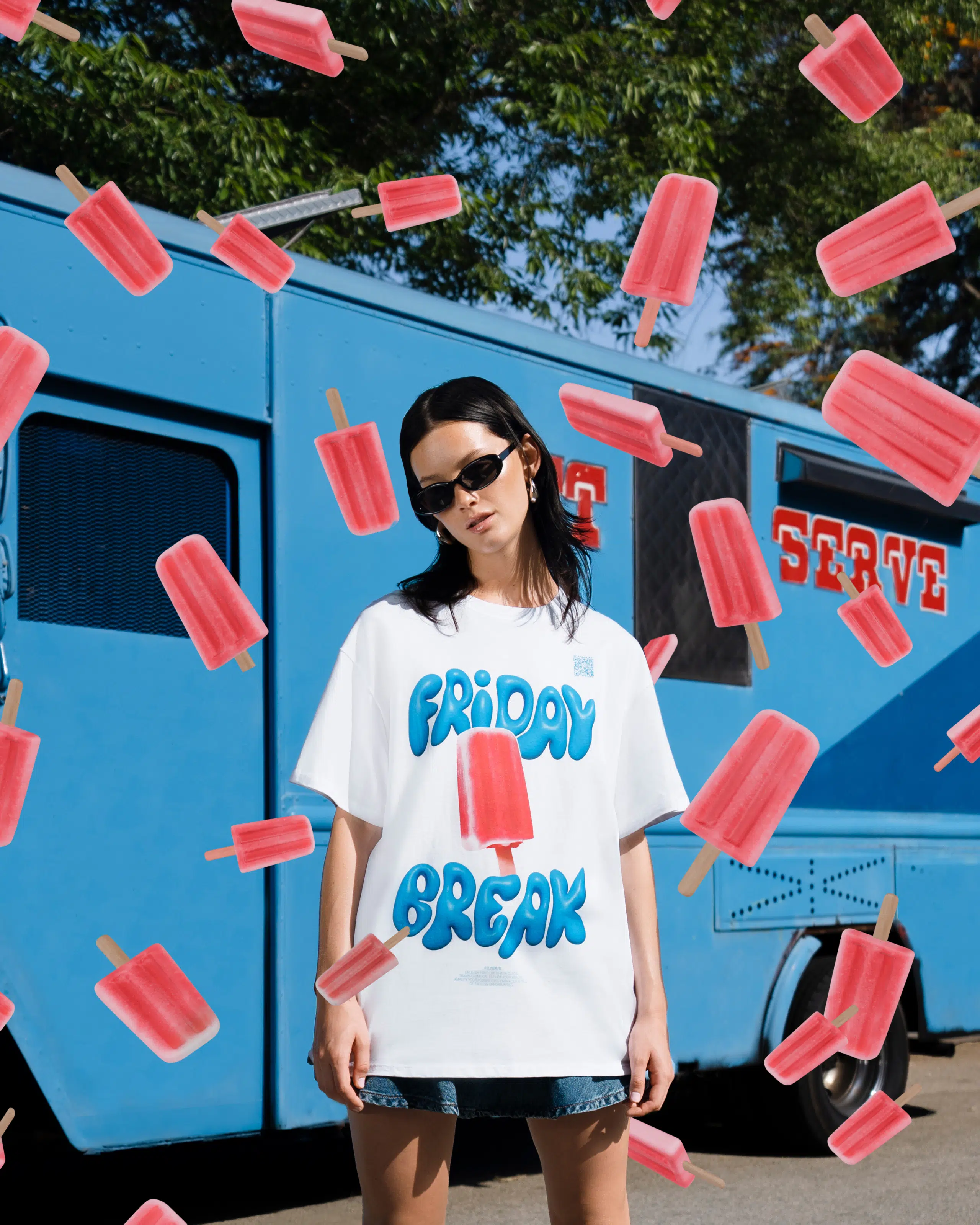
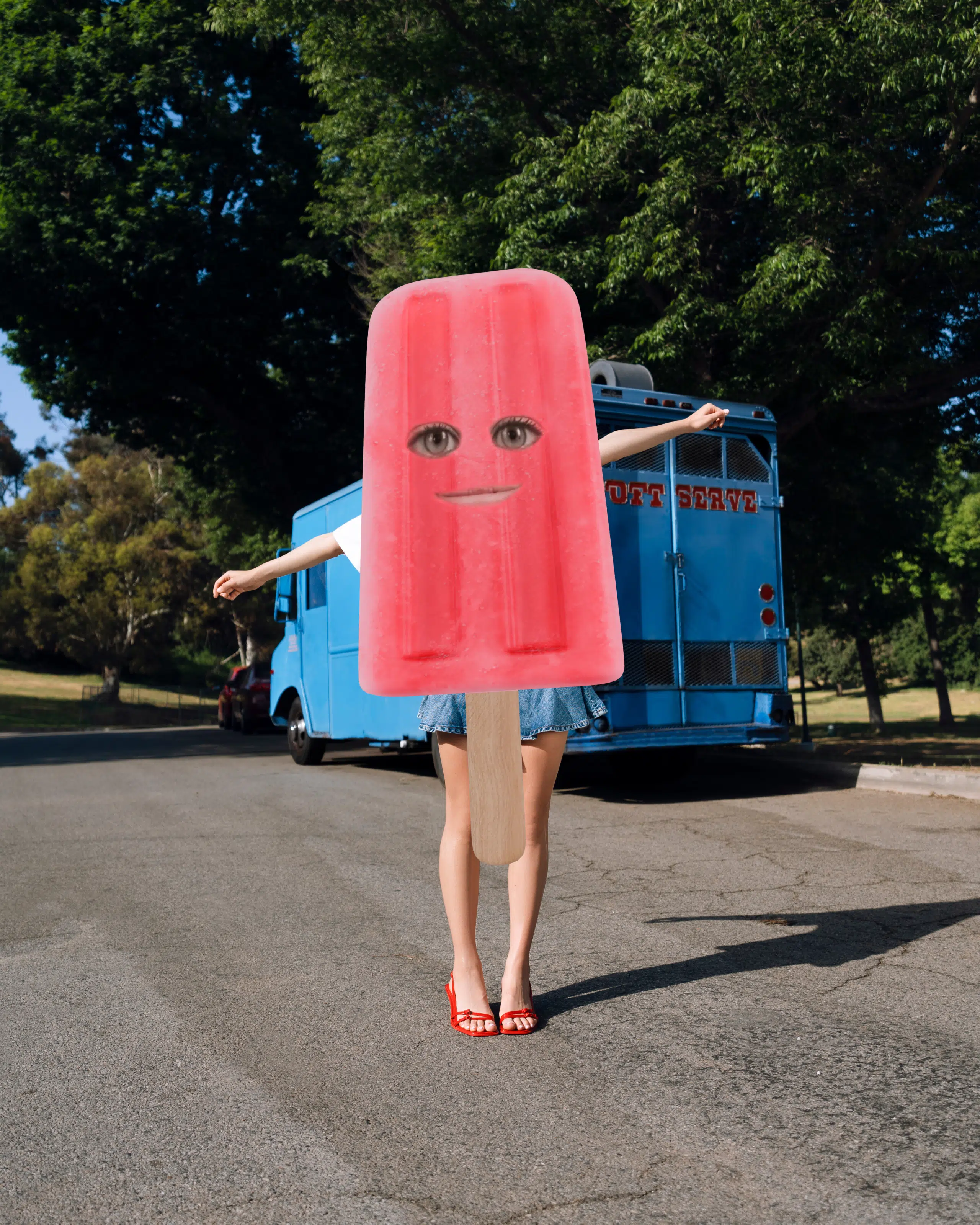
AR Filter Features: What’s Changed and What Remains
Despite Snapchat and TikTok introducing innovative features like full body tracking, sky segmentation, machine learning lenses, and AI integration, users still gravitate toward original features—particularly face tracking. Looking at filter types rather than specific features, we continue to see popularity in familiar mechanics like randomizers, quizzes, games, and virtual try-ons. While many new features have been introduced, none have truly revolutionized the industry.
For example, we’ve seen new AI integrations including instant shot lenses and even ChatGPT functionality. TikTok now offers voice recognition in multiple languages. However, these capabilities haven’t achieved viral status yet. They’re available but haven’t gained widespread adoption.
Key AR filter features and trends worth exploring include:
- Full body tracking technology
- Machine learning lenses
- AI integration (including instant shot lenses and ChatGPT functionality)
- Voice recognition in multiple languages (TikTok)
- Face tracking (remains most popular)
- Randomizers
- Interactive quizzes
- Gamified filter elements
- Virtual try-ons
Effective AR filters address specific psychological needs of your audience. Entertainment value forms the essential foundation across all industries. Beauty brands can enhance virtual try-ons with interactive elements like randomizers or gamification. Automotive, sports, and entertainment sectors benefit from discovery-based filters that match users with products, driving stronger engagement and personal connection.
The most successful filters across industries share a common trait: they enable users to express opinions and communicate stories with minimal effort. For maximum relevance, marketing teams should align filter concepts with current industry conversations and trends. This approach ensures your AR experience resonates with audience interests while maintaining brand relevance.
The Role of AI in AR Filter Creation
Artificial Intelligence has seamlessly integrated into both the development and functionality of AR filters, often operating behind the scenes. AI technology significantly expands creative possibilities, particularly when transforming users into characters from popular media or generating stylized versions of themselves. Despite these technological advances, the fundamental psychological pattern remains unchanged: users create content to experience surprising transformations, share these results, and enjoy reactions from others who find them equally novel. At its core, an effective AR filter functions like a well-crafted joke—delivering an unexpected conclusion that delights and entertains.
Finding Your Brand’s Perfect AR Platform Match
When selecting an AR platform, brands must align their strategy with specific business objectives rather than deploying a one-size-fits-all approach. TikTok, with its massive audience and content generation capabilities, delivers superior results for viral campaigns seeking maximum reach. Conversely, Snapchat excels in regions where it maintains stronger user presence and offers specialized functionalities like shoppable lenses that directly drive conversion metrics.
| Dimension | Snapchat (Lenses) | TikTok (Effects) |
|---|---|---|
| Daily AR usage | 350M+ daily AR users; 8B Lens uses/day (global). (newsroom.snap.com) |
Effects tied to TikTok’s scale; 21B+ videos and 8.6T+ views created with Effect House effects since launch. (TechCrunch) |
| Best at | High-attention try-on & immersive commerce; gamified brand play; “tap-to-buy.” | Trend-native storytelling with effects; creator collabs; viral beauty/green-screen narratives + Branded Effects. |
| Build tools | Lens Studio (pro) + Lens Web Builder (no-code). | Effect House (pro) + Mobile Effect Editor; templates + AI tools. |
Based on Snapchat’s 2025 statistics, key findings include:
- AR campaigns deliver 3,1x ad awareness, 2,2x brand awareness, and 1,7x brand association versus traditional ads.
- Snap AR Lenses achieve 8,5x higher swipe-to-purchase than conventional commercials. AR best practices boost performance by 24% for Lenses, 61% for Snap Ads, 47% for Commercials, and 18% for Stories.
- Selfie Lenses reach an APM index of 132 versus 100 for non-sharing Lenses, while conversion indexes show Lenses at 715 versus 100 for Commercials.
- AR experiences capture 15,3 seconds of active attention versus 2,1 seconds for standard in-feed content, driving 62% higher short-term brand choice and 40% increase in long-term loyalty.
Beyond social platforms, brands should consider integrating AR experiences into their websites through Snapchat Camera Kit, creating both entertaining and functional experiences that enhance the customer journey. Similarly, brand-owned mobile applications can leverage Camera Kit to implement custom AR functionality, from playful brand interactions to practical virtual try-ons. The most effective AR strategies embrace a comprehensive, multi-channel approach—identifying strategic touchpoints across the customer experience where AR can create meaningful engagement through platform-appropriate implementations.
Creating a Viral AR Filter: Navigating the Campaign Journey
Launching a successful AR filter campaign requires a structured approach that ensures your creative concept connects with your audience and delivers on your marketing objectives. Here’s a comprehensive step-by-step guide to take your AR filter from concept to successful launch:
1. Define Your Strategic Foundation
Start by setting clear campaign objectives and KPIs that align with your marketing goals. Next, carefully select the appropriate platforms based on where your audience is most active, whether that’s solely on social media or a combination of social and website experiences. Finally, take time to understand your audience preferences regarding AR experiences, particularly whether they prefer sophisticated, feature-rich interactions or simpler, entertaining experiences.
2. Develop Your Creative Concept
When developing your creative concept, ensure it aligns naturally with how users already behave on their chosen social media platforms. Strike a careful balance between showcasing your brand story and providing genuine entertainment value. Focus on creating mechanics that make users look and feel good when using your filter, as this significantly increases sharing likelihood. Complete this phase by developing detailed mockups that visualize exactly how your filter concept will function.
3. Review and Refine
Present your concepts to key stakeholders to gather initial feedback and make necessary adjustments. Conduct user testing with representatives from your target audience to validate that the concept resonates as intended. Once approved, begin the technical development process while using guest links to gather ongoing feedback throughout the development phase, allowing for continuous refinement.
4. Launch and Promote
After publishing your filter on selected platforms, create dedicated promotional content that showcases the filter in action. Activate all relevant marketing channels including email, website, PR, and social media to drive awareness. Consider implementing physical touchpoints such as QR codes on packaging or in-store displays to connect offline experiences with your digital filter. Partner with influencers who can authentically demonstrate filter usage to their followers, expanding your reach.
Example: In a recent campaign for an energy drink brand, we placed QR codes directly on product packaging (cans and bottles) that linked to our TikTok filter. This integrated approach generated substantially higher interaction rates compared to a standard platform-only launch.
5. Measure and Optimize
Track viral performance metrics including impressions, shares, and user-generated content volume. Analyze user understanding through conversion rates from filter opens to actual content creation. Gather qualitative feedback on the user experience through comments, direct messages, and social listening. Use this performance data to optimize current campaigns and inform future AR filter strategies.



Success Metrics: How to Measure AR Filter Campaign Impact
The effectiveness of AR filter campaigns can be measured through various metrics, depending on the campaign’s primary objectives. While shoppable lenses might focus on direct sales growth, most filter campaigns primarily aim to generate brand awareness. The success of an AR filter campaign hinges on content creation volume and subsequent awareness generation.
For shoppable lenses specifically, Snapchat offers direct purchase functionality by connecting brand product catalogs to their Lens platform. Despite this powerful capability, adoption remains limited due to regional platform popularity variations (primarily in France and USA) and lack of awareness among brands. Unfortunately, these features don’t integrate with systems like Shopify, as purchases occur directly through the lens interface.
Key AR Filter Metrics:
- Content creation volume (number of posts/videos created)
- Awareness generation (impressions and reach)
- Conversion from filter opens to content creation
- User progression through interaction stages
- Sales growth (for shoppable lenses)
- User experience quality (based on completion rates)
A well-designed AR experience functions as a conversion funnel, with analytics revealing how users progress through different interaction stages.
AR Filters in Action: Notable FFFACE Campaign Results
At FFFACE, we’ve developed several high-impact AR campaigns that showcase the true potential of filter marketing. Here are our most impressive case studies:
1. Fenty Beauty: “Which Rihanna Are You?”
Our Fenty Beauty filter generated over 100 million impressions in just a couple of weeks and inspired more than 100,000 TikTok creations, earning an award for outstanding performance. This campaign perfectly balanced product integration with entertainment value. We created a mechanic asking users “Which Rihanna are you?” that revealed one of Rihanna’s iconic looks. Using 20 Fenty Beauty products, we then helped users recreate Rihanna’s specific look from each photo—blending fun engagement with practical product application.
Tried the ‘WHICH RIRI ARE YOU?’ filter yet?2. Pride Month: Flag Identity Experience
Working with LGBT organizations, we developed a filter allowing users to discover which Pride flag represented them. This concept was particularly effective because it aligned with existing user behavior—during Pride Month, people already create themed makeup looks. Our filter seamlessly brought these makeup ideas online while incorporating provocative questions that resonated deeply with the audience. The results were extraordinary: nearly half a million TikToks created and over 1 billion impressions.

"Pride Palette Makeup" AR Filter
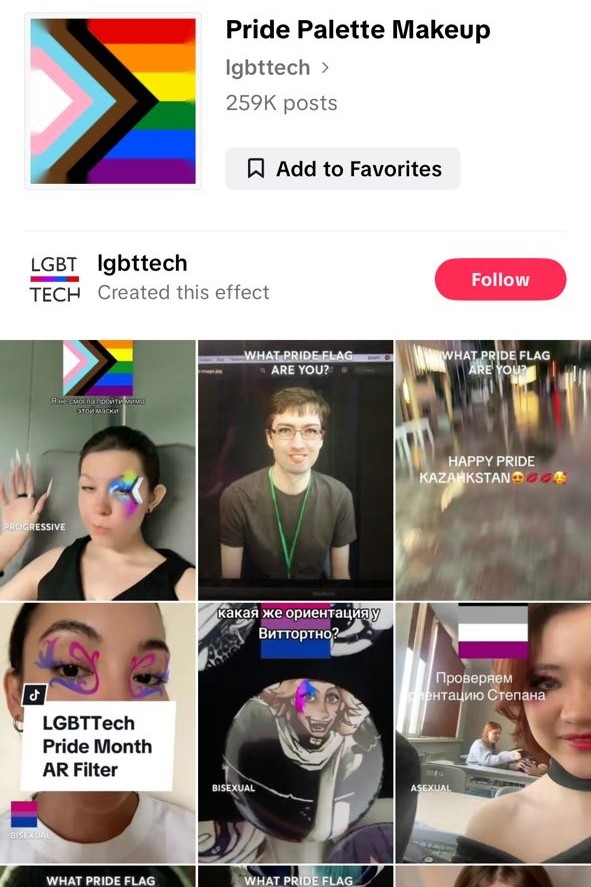
It went viral and has reached 259K posts on TikTok
3. Bershka: Digital Fashion Collections
Our collaboration with Bershka represents an exciting frontier for AR filters: digital fashion. We created more than 10 collections of virtual clothing items—t-shirts, hoodies, and more—that achieved remarkable popularity both online and offline. These filters directly drove sales while engaging Bershka’s audience through content creation featuring the digital garments. We enhanced the experience by adding selfie filters to each clothing item, allowing people to use them regardless of whether they owned the physical products. The metrics for these digital collections have consistently exceeded expectations.
4. Monobank: App-Integrated Distribution
One of our most innovative approaches involved a bank with just 50,000 Instagram followers but over 2 million banking app users. Rather than launching the filter through traditional social channels for April Fools’ Day, we created a push notification within their banking app that alerted all users about the new filter. This original distribution strategy allowed us to reach millions of users within just one day, demonstrating how creative distribution can dramatically amplify AR filter impact.
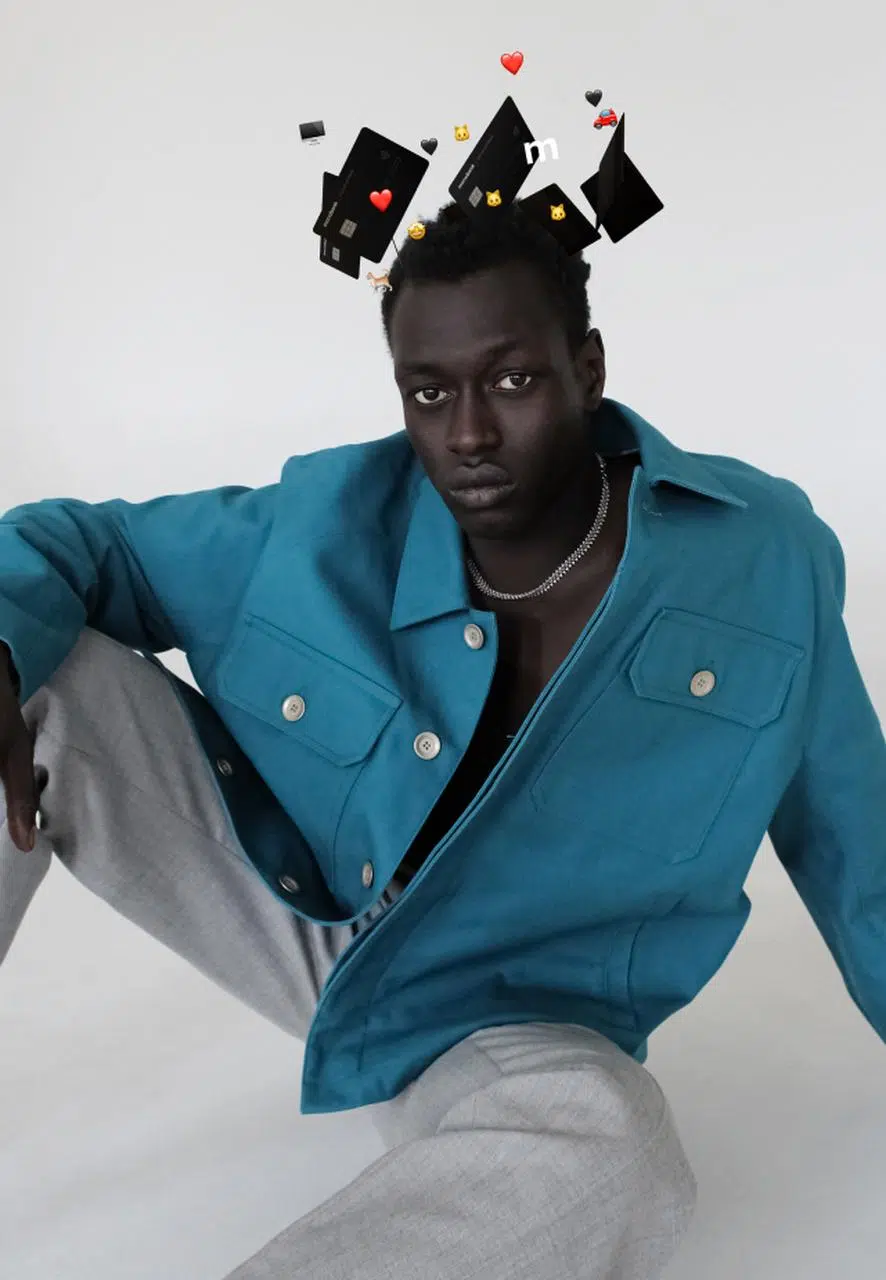


AR Filters: From Today’s Trend to Tomorrow’s Brand Essential
Looking ahead, AR filters represent a long-term strategic opportunity for brands rather than a passing trend. With mobile devices remaining the primary technology platform for the foreseeable future—at least 5-7 years before wearables reach mainstream usability—AR filters will continue to be a key touchpoint for consumer engagement. Even as technology evolves, the fundamental concept of augmenting reality with digital overlays will persist as an intuitive way to blend physical and digital experiences.
For brands contemplating AR filter adoption, the current market offers an ideal entry point. We now have robust data on implementation best practices, clear performance benchmarks, and established measurement frameworks to guide strategic decisions. Consumer engagement with AR remains consistently strong, with numerous case studies demonstrating proven ROI across various industries.
As AR technology continues to mature, brands that establish a presence now will be well-positioned to leverage future innovations in digital fashion, virtual commerce, and immersive brand experiences. The technology’s staying power makes AR filters not merely a tactical marketing tool but a valuable long-term investment in your brand’s digital ecosystem.




